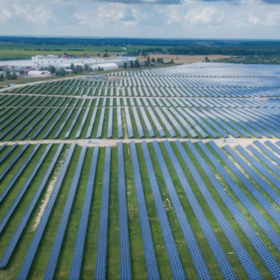Lithium-ion Battery Market by Component (Cathode, Anode, Electrolyte, Separator, Others), by Capacity (0-3, 000 mAh, 3, 000- 10, 000 mAh, 10, 000- 60, 000 mAh, 100, 000 mAh and Above), by Application (Electrical and Electronics, Automotive, Industrial, Others): Global Opportunity Analysis and Industry Forecast, 2023-2032. It is published in Valuates Reports under the Chemicals Industry Category.
The global lithium-ion battery market size was valued at USD 46.2 billion in 2022, and the lithium-ion battery industry is projected to reach USD 189.4 billion by 2032, growing at a CAGR of 15.2% from 2023 to 2032.
Major Factors Driving The Growth Of Lithium-Ion Battery Market are
The need for electric vehicles (EVs), consumer electronics proliferation, an increase in energy storage installations, battery technological developments, and the incorporation of renewable energy sources are some of the reasons that are driving the global lithium-ion battery market.
TRENDS INFLUENCING THE GROWTH OF LITHIUM-ION BATTERY MARKET
The cheap cost of lithium-ion batteries is predicted to drive significant expansion in the automotive industry. Demand for the product is anticipated to be driven by rising EV sales in the nation as a result of favorable federal legislation and the existence of numerous companies in the U.S. market. Over the following decades, li-ion batteries will become a commodity-like product due to increased EV manufacturing and demand. The International Energy Agency (IEA) predicts that the worldwide stock of light-duty EVs might rise even in the absence of further regulatory incentives or pro-EV initiatives. Many manufacturers are looking at new uses for EV batteries when they reach retirement age. Reusing EV batteries to power residences and other structures is one concept that is working successfully. These factors are expected to influence the growth of the Lithium-ion Battery Market.
The development of Li-ion batteries was crucial to the success of portable devices. When comparing joules of energy per kilogram, it has a substantially higher energy density than earlier battery technologies like nickel-cadmium (NiCd) and nickel metal hydride (NiMH). But because lithium isn’t the most stable element, the development of Li-ion led to several new safety worries. These issues have been resolved by the introduction of more advanced protective circuits. LiP packs were appealing to designers trying to save space, notably in ultra-slim notebooks, smartphones, and tablets, due to their thin, rectangular, adaptable pouch-like shape. These modern large-screen smartphones, commonly referred to as phablets and other applications use LiP cells. These factors are expected to influence the growth of the Lithium-ion Battery Market.
Additionally, the rapid development and application of intelligent weaponry, unmanned drones, and vehicles in the military sector add to the surge in demand for lithium-ion batteries. A type of rechargeable battery known for having too precise energy is the lithium-ion battery. Lithium-ion batteries are relatively light thanks to the use of lightweight lithium and other materials in their production. Lithium-ion battery use has shown great promise in several fields, including the aerospace industry, where Airbus Defence and Space successfully tested High Altitude Pseudo-Satellite Aircraft (HAPAS) prototypes that were powered by photovoltaic energy during the day and lithium-ion batteries at some point at night. The commercialization of lithium-ion batteries is now one significant step closer thanks to this development. These factors are expected to influence the growth of the Lithium-ion Battery Market.





